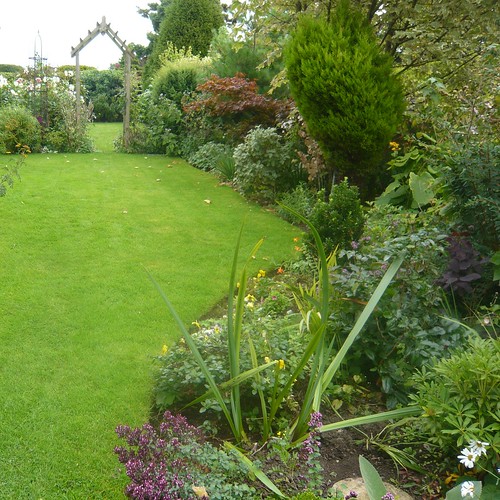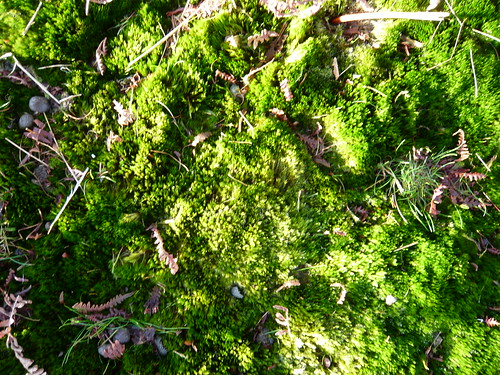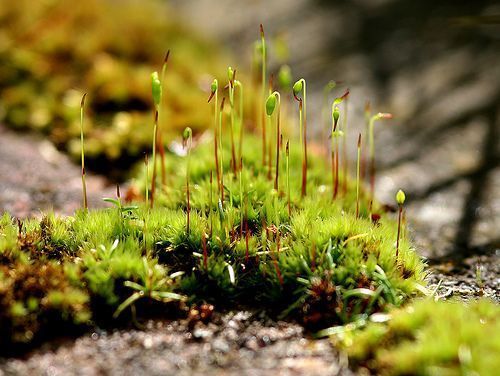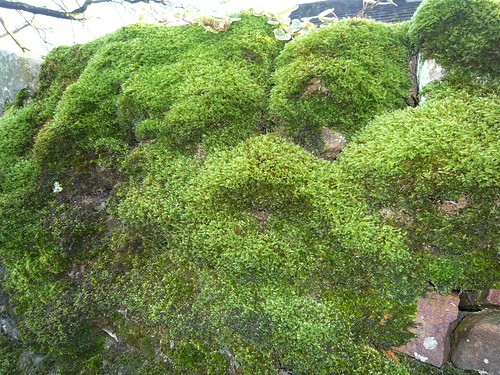Moss in Your Lawn ? – You Are Not Alone
The dry spell may have stopped your moss in it’s tracks but beware once mossy always mossy.
After a wet winter it is a good if your lawn has no moss but it is unlikely. The yellower green patches on the photo above are where the moss is beating the grass.
Moss Thrives in Lawns
- If the ground and soil under the lawn is compacted
- Waterlogging or poor drainage encourages lawn moss (and moss in other areas too)
- The grass that has been scalped by the lawn mower which cuts too short is an open invitation for moss to grow
- If moss has previously been growing it is likely to return.
- Where the lawn is old and a thatch of dead grass has built up and not been raked out or aerated
- Moss will grow if the lawn is in the shade or overhung with trees, if the soil is impoverished or if you are an unlucky gardener.
Treatments and Tips
- Don’t try to compost old moss – a normal compost heap won’t help as moss wont rot it just goes into suspended animation. So the moss will be returned with the compost
- Lawn sand is a proprietary formula of chemically treated fine sand using ammonium and iron sulphate. Spread evenly in April when rain is expected this can kill and turn the moss black.
- Liquid lawn moss killers and mixed granular ‘feed and weed’ products like ‘Evergreen Organic Choice’ can help keep the moss at bay. Follow the instructions on the box, bottle or packet.
- Introduce air and drainage by spiking well. A hollow tined for will remove plugs of soil to aid this process.
- Read more tips on Controlling Moss and about Moss Cures on Gardening Products.
.
Prevention may be the best course
- Aerate the soil regularly by using a hollow pronged fork. This I have found labour intensive, difficult and not very satisfying.
- Other aeration methods include special motorised devices can be hired to do the job. You can also get machines that scarify the thatch, dead leaves and moss.
- Feed the grass in spring and autumn with appropriate fertilizer.
- Try avoid too much compaction in difficult areas – keep the kids on hard wearing area
- Do not cut the grass too short
- If all else fails turn the lawn into a meadow or better still flower beds
- Moss thrives where grass struggles to grow. The best way to prevent excess moss growth is to provide conditions for strong grass growth.

Five things to do with Moss
- Kill it regularly and often
- Collect it and keep it in a bag until it dies
- Put plant pots on top of it so it never sees the light of day
- Cultivate it in the same wet spot for thousands of years then dig it up and burn it
- Did I mention killing it
I have a great crop of Moss but I have no idea what I can do with it.
It grows on Roof tiles, rocks, in lawns and on some paths and is a right proper nuisance. Your ideas and tips would be welcomed.
- I am told that it is a clear sign that my lawn isn’t properly drained eventhough it is on a slope all the moss is at the top – go figure.
- I will apply lawn sand containing dicholorophen and iron sulphate as long as the European garden police haven’t banned them. Then I can safely rake it up without spreading more spores – until next time.
- Improved drainage is the only long term cure and I might have to hire an aerator or JCB
- Collecting all the moss together I will leave it to go black and die when it can be used as an acid mulch for Azaleas and acid lovers
- As another tip it can be used at the bottom of a plant holder for the pot to stand on. It keeps it all moist.
- Mixing moss with beer and sugar creates a mixture to paint on new fences and pots to give them an algea covering and and quick ageing.
- The over cropping of Sphagnum moss is causing peat bogs to dry out too quickly so try Highland moss which grows in pine forests for a sustainable hanging basket moss





2 thoughts on “Moss in Your Lawn ? – You Are Not Alone”
too late for prevention! my lawn is more moss than grass. should i start again?
I think you should dig it up and grow potatoes
Comments are closed.